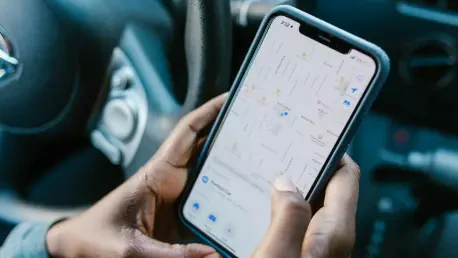What if the daily commute could become a thrilling competition, with prizes and public recognition waiting for those who drive the safest? In Australia, AAMI, a leading insurer under the Suncorp group, has turned this concept into reality with a pioneering app that gamifies driving behavior. By scoring drivers on habits like speed control and phone use, this innovative tool aims to cut down on road accidents and insurance claims. This isn’t just a tech gimmick—it’s a potential game-changer for how safety is approached on roads worldwide, sparking curiosity about whether friendly competition can truly save lives.
The Stakes of Safer Roads and Lower Claims
The importance of this initiative cannot be overstated. Road crashes claim countless lives each year and rack up billions in damages, placing a heavy burden on insurers and communities alike. AAMI’s app shifts the focus from merely covering losses to preventing them in the first place, tapping into a growing movement within the insurance industry to prioritize proactive safety. With distracted driving and speeding remaining top causes of accidents globally, a solution that makes caution engaging could redefine risk management and even influence premium costs for drivers who play by the rules.
This story matters because it touches on universal challenges. Beyond Australia, countries like the United States face similar issues with road safety, making this experiment a potential blueprint for insurers everywhere. If successful, such programs could lead to fewer tragedies and a fundamental shift in how driver behavior is shaped, offering a glimpse into a future where technology and human psychology intersect to create tangible benefits.
Inside AAMI’s App: Turning Safety into a Game
At the heart of AAMI’s strategy lies a telematics app that transforms driving into a scored contest, accessible to both policyholders and the general public in Australia. It monitors key behaviors—speeding, harsh braking, sharp cornering, rapid acceleration, and phone usage—assigning points based on performance. Drivers can climb leaderboards, earn rewards, and even see their names celebrated on digital billboards for exemplary scores, making safety a badge of honor rather than a chore.
What sets this apart from standard monitoring tools is its emphasis on engagement. Unlike traditional telematics that often feel invasive or punitive, AAMI’s approach leverages social competition and instant gratification to motivate users. According to data from Suncorp, feedback from similar programs has already shown improved driver scores and a reduction in claims among participants, with insights drawn from analyzing hundreds of millions of kilometers driven. This dual appeal of fun and safety creates a unique incentive structure that could sustain long-term participation.
The app also serves as a clever business tool. By attracting non-policyholders, it expands AAMI’s reach, potentially converting users into customers while gathering valuable behavioral data. This information helps refine risk assessment and underwriting processes, allowing for more personalized insurance offerings. It’s a strategic move that blends marketing with genuine safety goals, raising questions about how far this model can scale.
Voices from the Field: Does Gamification Really Work?
Industry analysts have weighed in on the psychological power of gamification, comparing AAMI’s app to tactics like rival tip jars at coffee shops that spark friendly competition. “It taps into a basic human instinct to stand out or belong to a winning group,” noted one behavioral expert, highlighting how social elements like leaderboards can drive sustained engagement. This perspective suggests that making safety a communal challenge could be more effective than traditional warnings or fines.
Real-world feedback from early users supports this view. Drivers report that seeing their rankings climb or drop provides an immediate nudge to adjust habits, with some admitting they’ve cut down on phone use just to boost their scores. Suncorp’s research reinforces this, indicating a correlation between consistent app feedback and fewer claims over time. However, skeptics point out a key limitation: voluntary programs often attract naturally cautious drivers, which may inflate early success metrics and obscure the app’s true impact on high-risk individuals.
To address this, experts advocate for more rigorous testing. Randomized trials with control groups are essential to determine whether gamified telematics genuinely reduces crash rates across diverse driver profiles. Without such data, the long-term effectiveness remains an open question, though initial anecdotes hint at a promising hook—provided the novelty doesn’t wear off.
Challenges in Scaling a Gamified Safety Revolution
Despite the excitement, rolling out a program like AAMI’s comes with significant hurdles. One major concern is data privacy, especially as the app collects information from non-policyholders. Transparency about how data is used—whether for pricing, claims, or research—is critical to maintaining trust, particularly in markets like the US where regulatory scrutiny is high. Insurers must ensure clear consent processes and strict retention policies to avoid backlash or legal challenges.
Another obstacle lies in measuring true outcomes. Self-selection bias in voluntary programs can skew results, making it hard to prove that improved scores translate to fewer or less severe accidents. Actuarial discipline, such as long-term tracking and randomized offers, is needed to validate the app’s impact on loss ratios. Without this, insurers risk overhyping a tool that may not deliver proportional benefits to its cost and effort.
Operationally, turning raw telemetry into actionable change demands heavy investment. Analytics to interpret data, fraud detection to prevent score manipulation, and integration into underwriting systems are just a few of the necessities. Additionally, testing prevention strategies like personalized coaching or financial incentives requires resources and a cultural shift within the industry toward proactive risk management. These complexities underscore that while the concept is innovative, execution will determine its success.
Practical Tips for Drivers and Insurers to Join the Movement
For drivers interested in programs like AAMI’s app, the steps are simple yet impactful. Start by downloading a similar telematics tool if available in your region, agree to behavior tracking, and focus on safe habits—maintain steady speeds, avoid abrupt stops, and keep distractions at bay. Regular use provides feedback to pinpoint and correct risky tendencies, potentially earning rewards while contributing to safer roads.
Insurers looking to adopt this model, especially in the US, should prioritize trust-building measures. Be upfront about data collection practices and limit retention to what’s necessary, ensuring customers feel secure. Invest in robust analytics to transform driving data into meaningful insights, and experiment with tailored interventions like coaching to enhance prevention. Safeguarding against fraud through secure systems is also vital to preserve program credibility and fairness.
Beyond individual action, collaboration is key. Insurers can partner with regulators and tech firms to refine gamified telematics, sharing anonymized data to study broader safety trends. Drivers, meanwhile, can advocate for wider access to such tools, pushing for programs that reward caution without invasive overreach. These combined efforts could amplify the reach and impact of gamified safety initiatives.
Reflecting on a Bold Experiment in Road Safety
Looking back, AAMI’s venture into gamified driving stood as a daring attempt to merge technology with behavioral science, aiming to curb accidents and claims through competition and rewards. It highlighted a critical shift in the insurance landscape, moving from reactive compensation to preventive action, and offered valuable lessons on the power of engagement. The data collected and the early improvements in driver scores pointed to a promising start, even if challenges like bias and privacy lingered.
The journey didn’t end there, though. For drivers, the next step was clear—seek out and support tools that incentivize safer habits, using personal feedback to refine skills behind the wheel. Insurers, on the other hand, had to commit to evolving these programs with rigorous testing and ethical data practices, ensuring they delivered real reductions in risk. As this concept continued to unfold, the industry faced an opportunity to build on this foundation, potentially crafting a future where every trip contributed to a collective goal of safer streets.









